New Kitten Checklist: Essentials for Your New Kitty (2024 Update)

Updated on

There are approximately 3.2 million adoptable cats in animal shelters in the US. Sadly, about 530,000 cats are euthanized annually to reduce the number of cats in the shelters. So, we congratulate you for bringing one of these adoptable furry babies into your home!
Bringing a new kitten into your home will brighten your world and provide non-stop entertainment. Kittens are playful little furballs and demand full attention and care. To keep them happy and healthy, you’ll need to purchase a few essentials Here is some vital information about handling your new kitten and their essentials as they settle in your home.
New Kitten Checklist: At a Glance
- Overall health check
- Spaying or neutering
- Ideal diet
- Vaccinations
- Tooth brushing
New Kitten Essentials Checklist
To help your kitten adjust to their new home, here are the supplies you need;
1. Food and Water
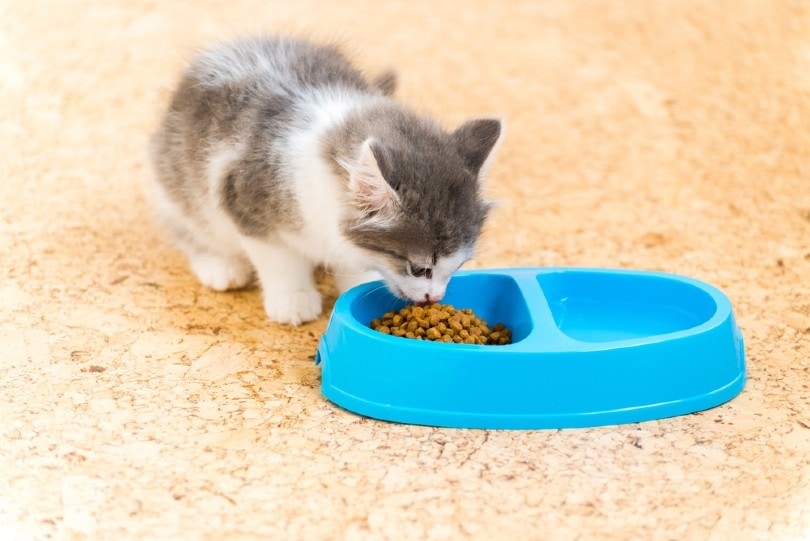
These two may seem obvious, but there are some crucial factors you need to look at before placing the cat’s food and water in their room. First, because kittens are playful, avoid bowls that could tip over easily.
Also, some kittens are allergic to plastic; try to avoid plastic until you are sure your kitten is not allergic to it. Finally, always ensure that the bowls are cleaned after every use to prevent bacteria from accumulating.
Examples of food you can give your kitten include Purina ONE Healthy Kitten Formula, Blue Buffalo Wilderness Kitten Food, and Wellness Complete Health Kitten Formula.
2. Litter Box

Kitty’s litter box must be big enough to avoid scattering litter all over the room. It is best to scoop and clean the litter box regularly because the kitten may avoid using a dirty and smelly one.
Cleaning the litter box weekly with soap and warm water is all you need to do; it is best to avoid fragrant cleaners and disinfectants with ammonia. Some of the best litter boxes for kittens include Frisco High Sided Cat Litter Box and Van Ness Cat Litter Pan.
3. Toys
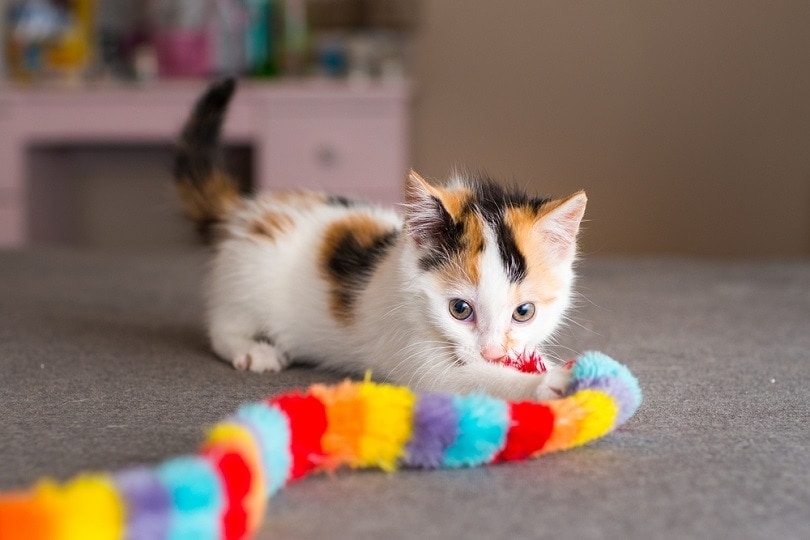
As mentioned, kittens are playful little furballs. They spend most of their time playing whether they have toys or not. However, because you want to make your new addition more comfortable, occupied, and happy, you should fill their room with toys they can play with.
You can get your kitten toys such as Frisco Cat Tracks Butterfly Cat Toy, Frisco Colorful Springs Cat Toy, and Frisco Basic Plush Mice Cat Toy.
4. Scratching Post

Scratching items is a typical feline behavior, so consider providing your new kitten with scratching posts such as the Frisco Cactus Cat Scratching Post and Frisco Sisal Cat Scratching Post. But it does not have to be expensive; a piece of cardboard or a large carpet sample can replace a costly scratching tree.
5. Carrier
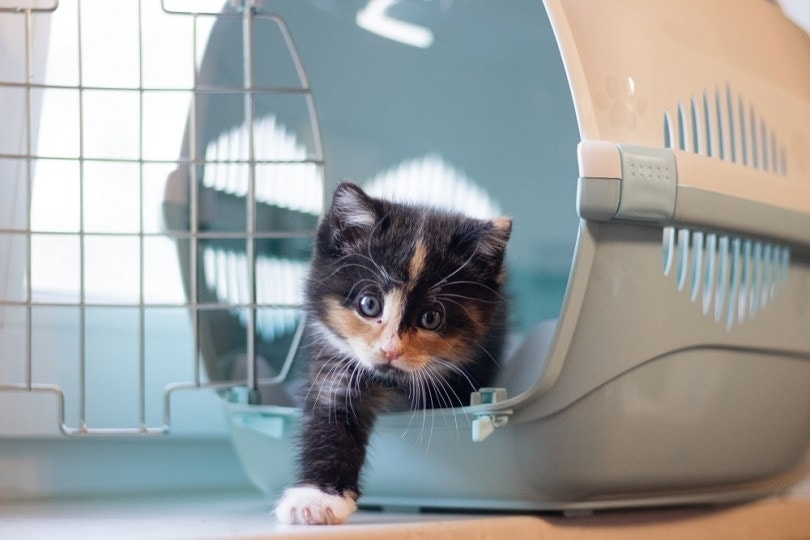
You must carry your new kitten to and from the vet occasionally and may need to take them to a friend’s house when you go out of town. A carrier is essential to keep them safe and secure while traveling.
Cats hate carriers, but you can keep the carrier around them for a few days before their first trip, so they can get used to the carrier. Seeing the carrier around them will help the new kittens see it as part of their environment.
Examples of carriers you can use include Necoichi Ultra Light Collapsible Cat Carrier Bag, Sherpa Delta Airline-Approved Cat Carrier Bag, and EliteField Soft-Sided Airline-Approved Cat Carrier Bag.
6. Grooming Tools
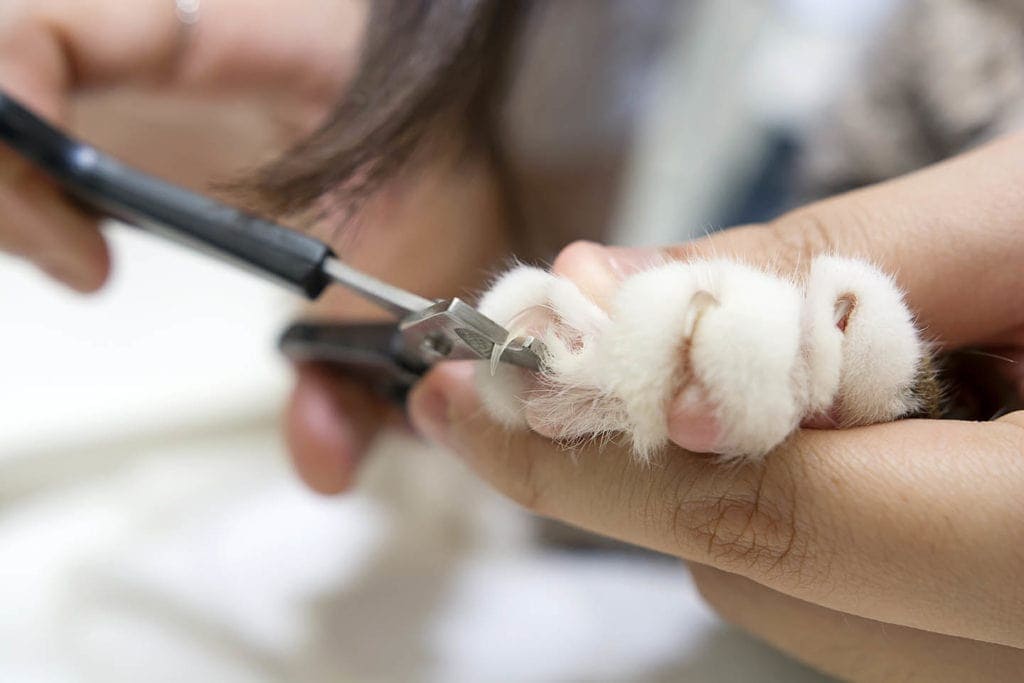
Your kitten’s claws need regular trimming, and most clippers for cats are affordable. Also, consider adding a brush to brush their fur regularly. You can pick up a Pet Republique Cat Nail Clipper and Safari Self-Cleaning Slicker Brush for Cats to keep your cat groomed and looking beautiful.
7. Enzyme Cleaner
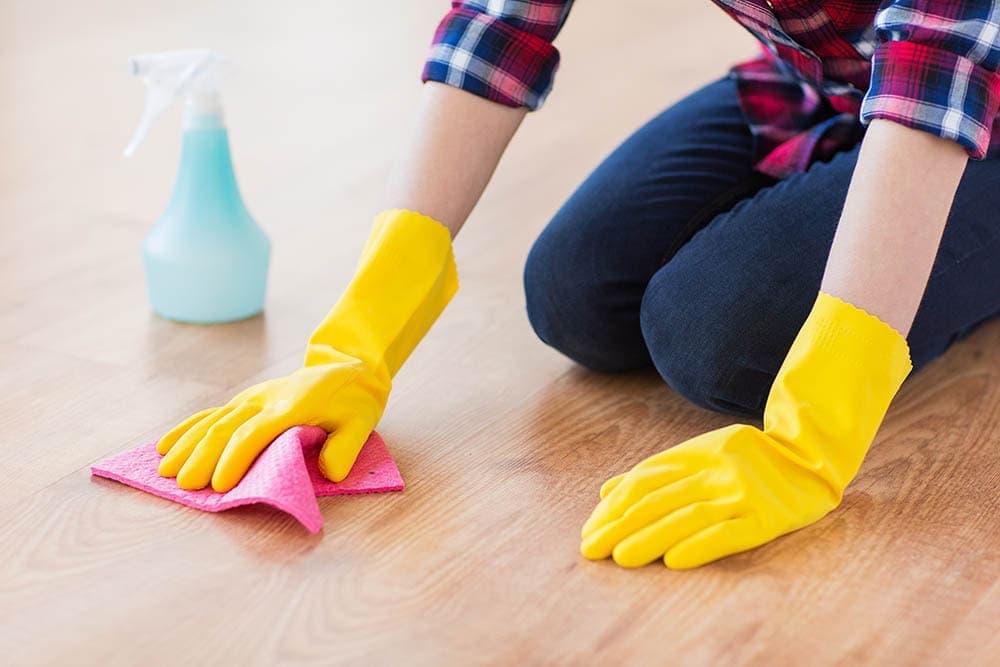
While your kitten is adjusting to their new home, they may have a few accidents that require prompt cleaning. Enzyme cleaners work better on stains and pungent odors than products with harsh chemicals and heavy fragrances. If you need a reliable cleaner that can tackle urine, feces, and vomit stains, try Hepper Advanced Bio-Enzyme Pet Stain & Odor Eliminator Spray
Having a pet means cleaning up smells, stains, hair, vomit, and more...and you can add to your pet clean-up routine with the Hepper Advanced Bio-Enzyme Pet Stain & Odor Eliminator Spray.
- ADVANCED ENZYMATIC CLEANER - Penetrates the most stubborn smells and stains at the deepest molecular...
- FOR ANY MESS, ON ANY SURFACE - This pet odor eliminator cleans your carpets, floors, furniture,...
It's our product, and we love it so much, we just have to share! It permanently removes the very worst smells and stains, and we offer a 100% satisfaction guarantee!
New Kitten Vet Checklist
If you are looking forward to several happy years with your kitten, you must have them examined by your vet regularly. Below is a kitten vet checklist for your tiny fur friend:
1. First Vet Visit
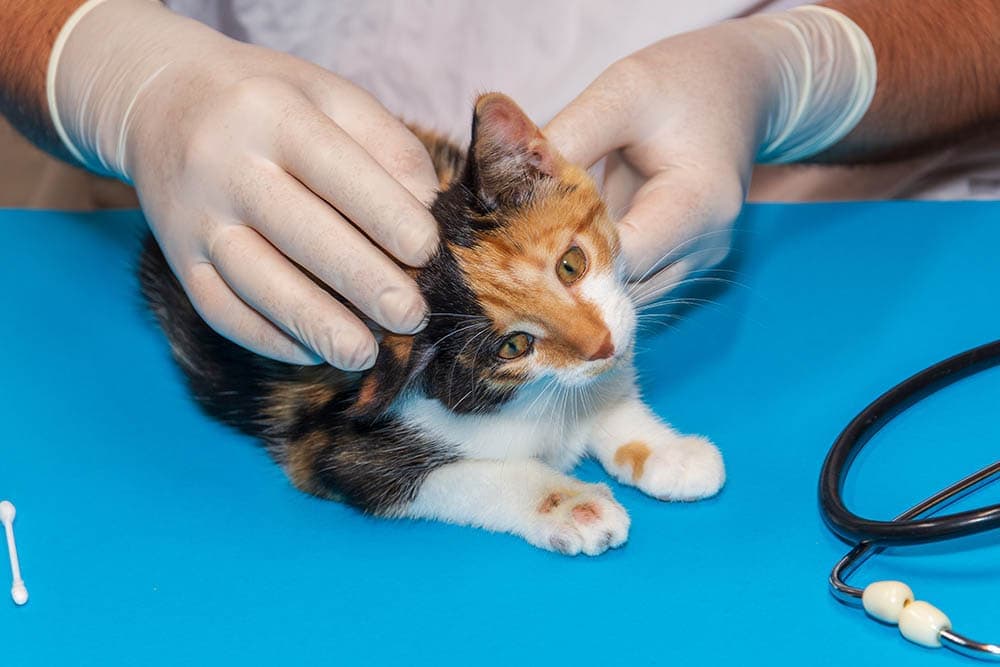
When you get your new kitten, the first thing you need to do is take them to a vet. The vet will run a comprehensive medical exam to check the kitten’s overall health, including their eyes, teeth, heart, lungs, etc. The vet will also discuss spaying or neutering your kitten.
2. Kitten Diet
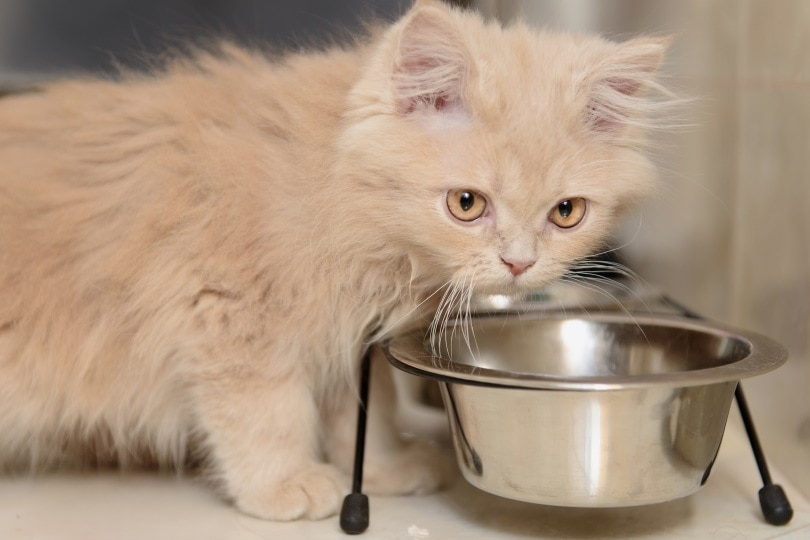
Consult the vet about how soon you can change the kitten’s diet and which brand is suitable for the kitten. Getting the correct information about the kitten’s diet before introducing new food is wise.
3. Vaccinations
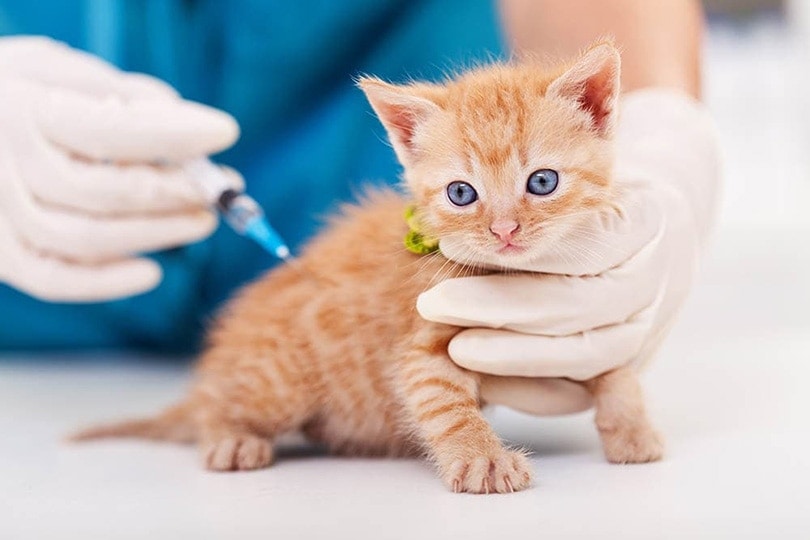
A vet checklist should also include the vaccines that protect them, such as the rabies vaccine and Herpesvirus vaccine.
4. A Toothbrush
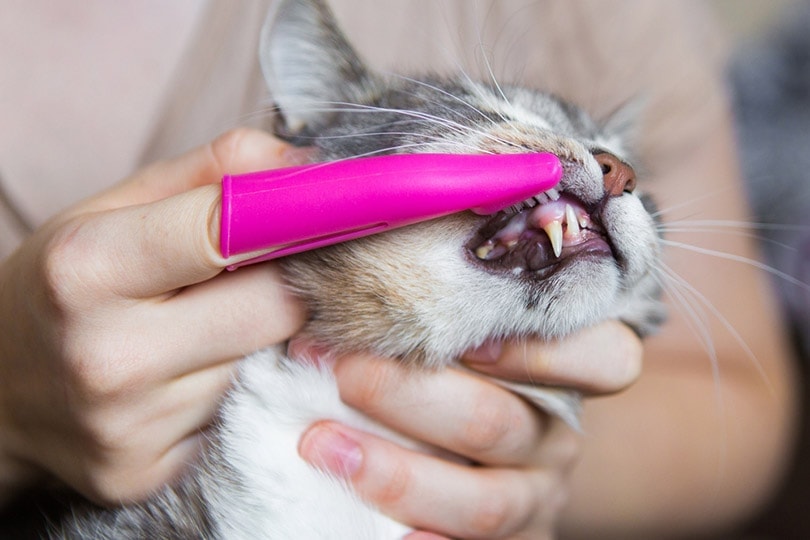
Your kitten will need a toothbrush and toothpaste designed for felines. Cats and kittens need daily brushing, but once a week is reasonable.
What to Do with a New Kitten Overnight

Before bringing your new kitten in, you must modify your home and make a few changes. First, you need to remove all the hazards in your home and set up their supplies and equipment.
The earliest a cat can leave their mom is 8 weeks, but most breeders wait until their cats are at least 12 weeks old. This age is equivalent to a 4-year-old human child leaving home. By that time, the kitten knows where their essentials are: their toys, toilet, food, water, etc. A new home may make them uncomfortable, and they may resort to hiding as a coping strategy.
Some kittens are bold and may not hide, but if the kitten is shy, give them the option of hiding. To make things easier for your new kitten, try to make things recognizable for them. For example, you can talk to the shelter or the breeder and request a blanket that smells of their mom.
Alternatively, you can arrange for you to give your T-shirt for the mother and her litter to sleep on days before you pick up the new kitten. You can then use the T-shirt to make up a kitten bed for the kitten. The kitten’s favorite food is not only a recognizable item, but it also helps to avoid stomach upsets. In addition, it makes the kitten’s life a little scary.
After a few weeks, you can invite your neighbors over to see the little new family member. If you have overexcited children, have them check out the kittens individually while they sit calmly.
Where Should a Kitten Sleep on the First Night?
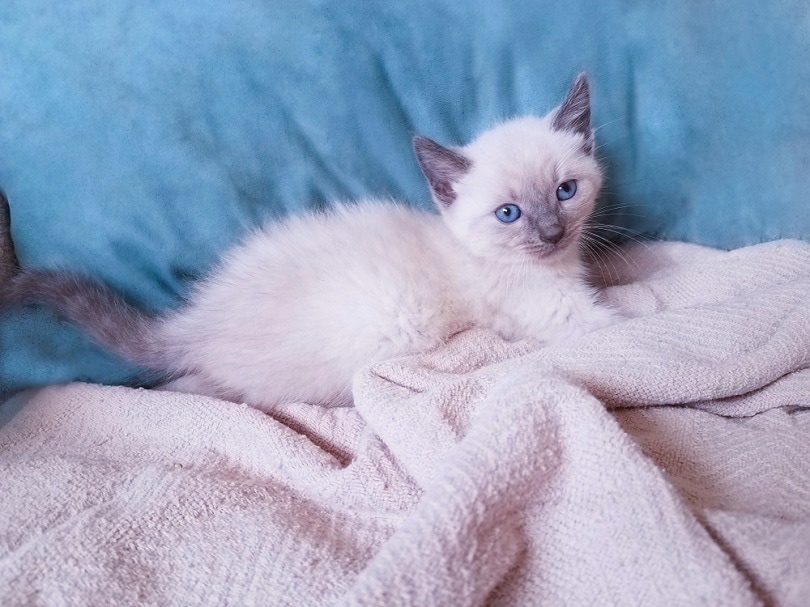
Try to confine the new kitten in one room to get them accustomed to their new surroundings gradually. As days go by, you can introduce them to the rest of the house, but it should also be gradual. Confining kitty in one room makes it easier for them to transition from their old home to their new home.
If you are adopting a kitty from a shelter, prep their new home before she comes in.
- Get rid of electric cords
- Put away any houseplants
- Secure your breakable items
- Repair holes that are large enough for kittens to enter
- Make sure that windows and doors can close completely
- Set up a litter box in one corner
- Set up food and water bowls in the other corner
Some people may prefer laundry rooms or bathrooms because they are easy to clean and small enough. You can stack up the room with different toys and maybe a catnip toy for distraction when you are not around.
You can also consider having them sleep in your bedroom. Remember, some kittens might not have spent a night alone, so having you close to them might ease their first night fright.
How to Get a Kitten Get Used to a New Home
New sounds, new smells, and new sights can be terrifying for a new kitten. Unfortunately, the new kitten may have left behind a loving mom and littermates. Your understanding, care, and patience are all they need to help them settle into their new surroundings.
There are also practical steps that you can take to get the kitten used to their new home. For instance, you can try as much as possible to avoid scaring them away. For example, avoid bringing people over until your cat is comfortable in your home.
Also, try to introduce new foods later when they settle in and feed them the same formula they consumed at the breeder’s facility or shelter. Introducing a new kitten to new foods abruptly could result in a tummy problem.
Also, try to spend as much time with your new addition as possible so they get to know you better. Spending more time with them will help them replace the old scents with your new scent, thus making you their source of security. In addition, your scent will serve them well when you are away.
Conclusion
You’re ready to be a cat parent if you have checked everything on this list. You can also add other essentials that you see fit. The goal is to ensure the kitty is comfortable and ready to settle in their new home. Above all, have patience when you’re training your kitten. They may not always listen to you, but they will eventually learn the ropes!
Featured Image Credit: Vanilin Ka, Shutterstock












